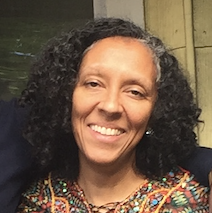Equity and Urban Planning – Build institutional capacity and culture
November 16, 2015 Leave a commentThis is the third of a four part series, sharing some of the lessons IISC and Horsley Witten Group learned in our efforts to support RhodeMap RI in weaving social equity into its regional planning process, and particularly our facilitation of the project’s Social Equity Advisory Committee.
Lesson 3. Build the capacity and culture within public planning institutions to focus on equity and to facilitate broad-based public engagement.
Most planning agencies, regulators, and planning consultants are not well equipped to take on the challenge of seriously engaging communities that chronically experience social inequities. As a planning agency prepares to launch a planning process, it needs to build both a culture and capacity that welcomes and supports engaging community members. This often begins with acknowledging the expertise that comes from lived experience, and the awareness that the agency may not have all the knowledge and skill it needs to take equity seriously.
A learning journey with staff that includes an understanding of present-day social inequities, and historical drivers of those inequities is a great place to start. Let community partners and other resource people help agency staff deepen their understanding and skill in explaining how racism and other ‘ism’s set the stage for current outcomes is an important part of the learning agenda. You’ll want to identify indicators that illuminate inequities in your community (e.g., education, housing, income, etc.) and explore who is being adversely affected currently and who has been affected historically. You’ll want to explore the likely consequences of not addressing inequities directly, and fully acquaint yourself with groups and individuals who are working for equity in areas such as education, community development and employment. What are they thinking and what are they doing about the issues that you’ll be focusing on? What kinds of opposition are they facing and how might that affect your efforts as well?
Creating a supportive culture also means approaching planning as an adaptive challenge rather than a technical challenge. That means understanding that there are no purely right or wrong answers, and no single solutions that will yield equitable results. It means understanding that learning and dialogue is required to frame problems as well as find solutions, and that power dynamics and politics must be taken into account. It means being willing to put other forms of expertise – like lived experience of inequities – on par with professional planning expertise, and being open to the wisdom that comes from the communities you serve. It means making space for the multiple stakeholders who will have to collaborate both during planning and during implementation, since no single source of authority can simply impose solutions or drive implementation on its own.
Building collaborative capacity and taking a network-based approach is an important aspect of the capacity and infrastructure. Planning agencies would do well to think strategically about how to build a broad network of support for the plan, and for prioritizing equity, both inside and outside of government.
And, as we explored in the first part of this series, it is important to build in time lines, resources, and decision-making processes that can support you in taking this approach.
For more in this series of lessons learned, check out:
- Lesson 1: Weave equity into the planning process AND the content of the resulting plans.
- Lesson 2: Engage those most directly affected by inequities
- Lesson 4: Lead boldly, collaboratively, authentically
This series builds on a workshop designed by Nate Kelly of the Horsley Witten Group and Cynthia Silva Parker of IISC.
